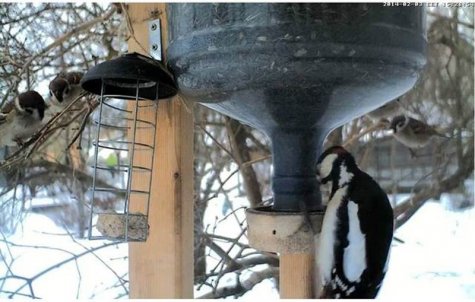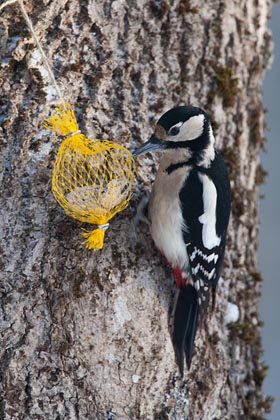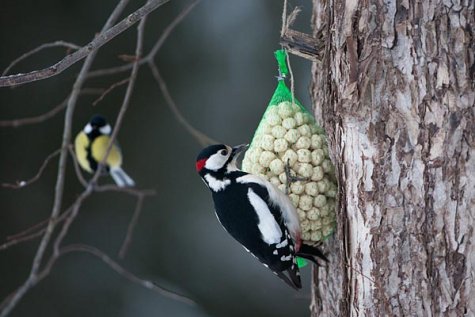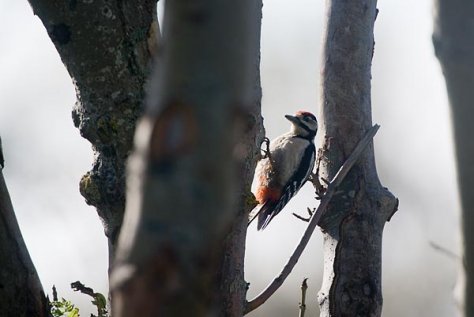Winter bird feeder webcam - Great spotted woodpecker
Web camera image captured by Gavril, LK forum
Translation: Liis
Great spotted woodpecker Suur-kirjurähn Dendrocopos major
The great spotted woodpecker was visiting the birdfeeder the day before the opening of the camera link, when Arne was only testing the camera image. Thus there has been no reason to add it to the list of visitors until now.
It is the right time to talk about great spotted woodpeckers because in February the males begin dividing territories between themselves and to proclaim it. The loud-voiced sounds of territory defence and partner search are at its loudest in April. On searching for insects only a faint and slow tapping is heard from the forest.
The great spotted woodpecker is our best known, most widely spread and most numerous woodpecker. There is a little slip in the name – the greatest of the woodpeckers is the white-backed woodpecker (whether this species was not yet known when names were given, or had not been measured and weighed history doesn’t tell). The great woodpecker is less than a quarter of a metre long and weighs less than a hundred grams.
The back of our hero of the day is clearly defined in black where we immediately notice large white shoulder patches on the upper part of the wings. The white chest seems soiled and there are no bars on the white belly. The under-tail feathers are brightly red, the tail has a pointed tip and stiff feathers which makes it useful as support when tapping on tree trunks
The crown feathers on the head of the great spotted woodpecker are black, on the forehead a small bright patch. Let us now begin with distinguishing between the birds from their characteristics; pay attention to Arne’s photos below. The male can be identified by the bright red patch on the nape, the head plumage of an adult female is completely black. The entire crown plumage of young birds is reddish and the undertail feathers pink. The legs are greenish grey.
In good cone years the birds are more stationary; in the opposite case the numbers in our forests can be several times higher.
Photos: Arne Ader
Great spotted woodpecker
Great spotted woodpecker and great tit
Great spotted woodpecker observations: LINK












